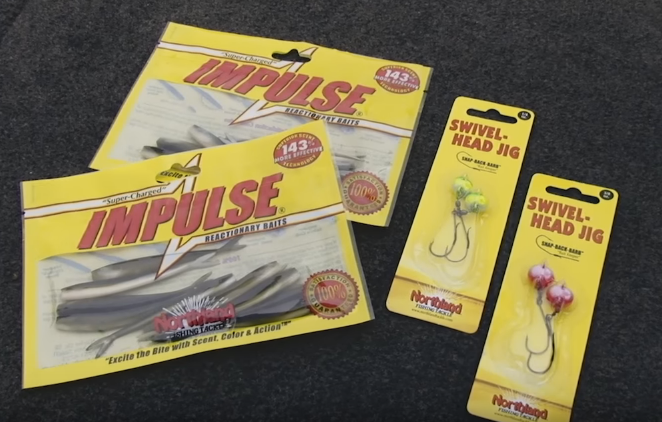
Shallow structure, warm water, and willing early-season walleyes: this scenario plays out many times over as spring inches its way across the Walleye Belt, and the setup begs for a properly presented lead head jig.
But the shallow structure also means emerging weeds, rocks, or bottom debris that can snag, foul, or otherwise impede a jig’s action and frustrate a fisherman’s best efforts. When you find yourself battling the bottom, take a tip from fishing guide, tournament angler, and Team Northland member Tony Roach and try pitching a Swivel-Head Jig.
Its football-shaped head crawls over rocky bottoms, while its flat underside makes it stand-up capable. But the most unique feature is the Crawler Hauler Hook attached to the head via a barrel swivel, which allows the hook-and-bait to move independently of the head.
“When you couple it with a soft plastic trailer, the bait stands straight up,” he says. “The hook point doesn’t snag nearly as much, and the bait stays up where walleyes can see and grab it more easily.
“You can use live bait, but whether I’m pitching a rock hump, shoreline break, or current seam, I prefer something like a 3-inch Impulse® Smelt Minnow or Ringworm because the body is more buoyant and stays vertical.”
The jig is productive year-round, he adds, as the swiveling action makes the soft plastic more lifelike, even during longer pauses in the retrieve. But in those spots where early-season walleyes tend to hold, it’s an ace in the hole that serious walleye seekers shouldn’t ignore.
For more on the Swivel-Head Jig follow the video link: “Watch Video”

